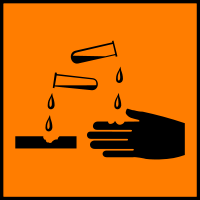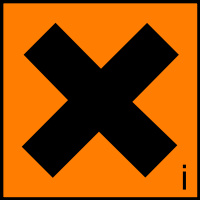-
tetrasodium 3-hydroxy-4-(2-{2-sulfonato-4-[2-(4-sulfonatophenyl)diazen-1-yl]phenyl}diazen-1-yl)naphthalene-2,7-disulfonate
-
ChemBase ID:
103486
-
Molecular Formular:
C22H12N4Na4O13S4
-
Molecular Mass:
760.56876
-
Monoisotopic Mass:
759.88744759
-
SMILES and InChIs
SMILES:
[Na+].[Na+].[Na+].[Na+].Oc1c(cc2cc(ccc2c1/N=N/c1c(cc(cc1)/N=N/c1ccc(cc1)S(=O)(=O)[O-])S(=O)(=O)[O-])S(=O)(=O)[O-])S(=O)(=O)[O-]
Canonical SMILES:
Oc1c(/N=N/c2ccc(cc2S(=O)(=O)[O-])/N=N/c2ccc(cc2)S(=O)(=O)[O-])c2ccc(cc2cc1S(=O)(=O)[O-])S(=O)(=O)[O-].[Na+].[Na+].[Na+].[Na+]
InChI:
InChI=1S/C22H16N4O13S4.4Na/c27-22-20(43(37,38)39)10-12-9-16(41(31,32)33)6-7-17(12)21(22)26-25-18-8-3-14(11-19(18)42(34,35)36)24-23-13-1-4-15(5-2-13)40(28,29)30;;;;/h1-11,27H,(H,28,29,30)(H,31,32,33)(H,34,35,36)(H,37,38,39);;;;/q;4*+1/p-4
InChIKey:
KQHKSGRIBYJYFX-UHFFFAOYSA-J
-
Cite this record
CBID:103486 http://www.chembase.cn/molecule-103486.html


NAMES AND DATABASE IDS
NAMES AND DATABASE IDS
Names Database IDs
|
IUPAC name
|
|
tetrasodium 3-hydroxy-4-(2-{2-sulfonato-4-[2-(4-sulfonatophenyl)diazen-1-yl]phenyl}diazen-1-yl)naphthalene-2,7-disulfonate
|
|
tetrasodium 3-hydroxy-4-[(E)-2-{2-sulfonato-4-[(E)-2-(4-sulfonatophenyl)diazen-1-yl]phenyl}diazen-1-yl]naphthalene-2,7-disulfonate
|
|
|
|
|
IUPAC Traditional name
|
|
tetrapotassium 3-hydroxy-4-(2-{2-sulfonato-4-[2-(4-sulfonatophenyl)diazen-1-yl]phenyl}diazen-1-yl)naphthalene-2,7-disulfonate
|
|
tetrasodium 3-hydroxy-4-[(E)-2-{2-sulfonato-4-[(E)-2-(4-sulfonatophenyl)diazen-1-yl]phenyl}diazen-1-yl]naphthalene-2,7-disulfonate
|
|
tetrasodium 3-hydroxy-4-(2-{2-sulfonato-4-[2-(4-sulfonatophenyl)diazen-1-yl]phenyl}diazen-1-yl)naphthalene-2,7-disulfonate
|
|
|
|
|
Synonyms
|
|
ATX Ponceau S red staining solution
|
|
3-Hydroxy-4-[2-sulfo-4-(4-sulfo-phenylazo)phenylazo]-2,7-naphthalene-disulfonic acid tetrasodium salt
|
|
PONCEAU S
|
|
Ponceau S solution
|
|
3-Hydroxy-4-(2-sulfo-4-[4-sulfophenylazo]phenylazo)-2,7-naphthalenedisulfonic acid sodium salt
|
|
Ponceau S
|
|
ATX 丽春红 S 红色染色溶液
|
|
Ponceau S
|
|
Ponceau S solution
|
|
|
|
|
CAS Number
|
|
|
EC Number
|
|
|
MDL Number
|
|
|
PubChem SID
|
|
|
PubChem CID
|
|
|
Color Index Number
|
|
DATA SOURCES
DATA SOURCES
All Sources Commercial Sources Non-commercial Sources
CALCULATED PROPERTIES
CALCULATED PROPERTIES
JChem
|
Acid pKa
|
-5.0430865
|
H Acceptors
|
17
|
H Donor
|
1
|
LogD (pH = 5.5)
|
-4.6610913
|
LogD (pH = 7.4)
|
-4.6666694
|
Log P
|
-3.8781414
|
Molar Refractivity
|
151.1303 cm3
|
Polarizability
|
59.302017 Å3
|
Polar Surface Area
|
298.47 Å2
|
Rotatable Bonds
|
8
|
Lipinski's Rule of Five
|
false
|
PROPERTIES
PROPERTIES
Physical Property
Safety Information
Product Information
Bioassay(PubChem)
|
Melting Point
|
|
300°C
|
 Show
data source Show
data source
|
|
|
Density
|
|
1.01 g/mL at 20 °C
|
 Show
data source Show
data source
|
|
|
Refractive Index
|
|
n20/D 1.338
|
 Show
data source Show
data source
|
|
|
Absorption Wavelength
|
|
λmax 352 nm
|
 Show
data source Show
data source
|
|
λmax 520 nm (2nd)
|
 Show
data source Show
data source
|
|
|
Storage Condition
|
|
Room Temperature (15-30°C), Desiccate
|
 Show
data source Show
data source
|
|
|
RTECS
|
|
QJ6600000
|
 Show
data source Show
data source
|
|
|
European Hazard Symbols
|
 Corrosive (C) Corrosive (C)
|
 Show
data source Show
data source
|
 Irritant (Xi) Irritant (Xi)
|
 Show
data source Show
data source
|
|
|
MSDS Link
|
|
|
German water hazard class
|
|
1
|
 Show
data source Show
data source
|
|
3
|
 Show
data source Show
data source
|
|
|
Risk Statements
|
|
34
|
 Show
data source Show
data source
|
|
36/37/38
|
 Show
data source Show
data source
|
|
R:36/37/38
|
 Show
data source Show
data source
|
|
|
Safety Statements
|
|
26-36
|
 Show
data source Show
data source
|
|
26-36/37/39-45
|
 Show
data source Show
data source
|
|
S:20-25-26-37/39
|
 Show
data source Show
data source
|
|
|
GHS Pictograms
|

|
 Show
data source Show
data source
|

|
 Show
data source Show
data source
|
|
|
GHS Signal Word
|
|
Danger
|
 Show
data source Show
data source
|
|
Warning
|
 Show
data source Show
data source
|
|
|
GHS Hazard statements
|
|
H314
|
 Show
data source Show
data source
|
|
H315-H319-H335
|
 Show
data source Show
data source
|
|
|
GHS Precautionary statements
|
|
P261-P305 + P351 + P338
|
 Show
data source Show
data source
|
|
P280-P305 + P351 + P338-P310
|
 Show
data source Show
data source
|
|
|
Personal Protective Equipment
|
|
dust mask type N95 (US), Eyeshields, Gloves
|
 Show
data source Show
data source
|
|
Eyeshields, full-face respirator (US), Gloves, multi-purpose combination respirator cartridge (US), type ABEK (EN14387) respirator filter
|
 Show
data source Show
data source
|
|
Faceshields, full-face respirator (US), Gloves, Goggles, multi-purpose combination respirator cartridge (US), type ABEK (EN14387) respirator filter
|
 Show
data source Show
data source
|
|
Faceshields, Gloves, Goggles
|
 Show
data source Show
data source
|
|
|
Purity
|
|
Dye Content ~75%
|
 Show
data source Show
data source
|
|
|
Concentration
|
|
~0.1 % (w/v) Ponceau S in 5% acetic acid
|
 Show
data source Show
data source
|
|
0.1 % (w/v) in 5% acetic acid
|
 Show
data source Show
data source
|
|
|
Grade
|
|
for electrophoresis
|
 Show
data source Show
data source
|
|
for microscopy (Hist.)
|
 Show
data source Show
data source
|
|
practical grade
|
 Show
data source Show
data source
|
|
|
Compostion
|
|
Dye content, 75%
|
 Show
data source Show
data source
|
|
|
Certificate of Analysis
|
|
|
Suitability
|
|
in accordance for electrophoresis test
|
 Show
data source Show
data source
|
|
|
Product Line
|
|
BioReagent
|
 Show
data source Show
data source
|
|
|
Empirical Formula (Hill Notation)
|
|
C22H12N4Na4O13S4
|
 Show
data source Show
data source
|
|
DETAILS
DETAILS
 MP Biomedicals
MP Biomedicals
 Sigma Aldrich
Sigma Aldrich
Sigma Aldrich -
09276

|
Frequently Asked Questions
Live Chat and Frequently Asked Questions are available for this Product.
Features and Benefits
Non-toxic Reagents SystemsWith conventional electrophoresis reagents, there is always a risk to health. By contrast, the reagents in the ATX reagent system are non-toxic, environmentally friendly. Conventional reagents contain various toxic substances: buffer solutions contain barbituric acid, classified as a narcotic according to the Dangerous Drugs Act; staining solutions contain methanol and acetic acid which irritate the skin and airways; clarifying solutions contain methanol and dioxan isobutanol, a carcinogenic, inflammable substance which is classified as hazardous waste. Stop using these toxic substances. For your electrophoresis, start using the non-toxic ATX reagent system and protect yourself and the environment against permanent damage.The advantages are clear. ATX reagents are:
• non-toxic and non-irritant to skin and airways
• environmentally friendly
• disposable with regular waste water
• odorless
• non-inflammable
• stable at room temperature
• specially coordinated with ATX micro-solid strips
• available as ready-to-use solutions or as concentrates
• guaranteed to give excellent, reproducible results
Packaging
6 bottles for the preparation of 250 mL ready-to-use-solution |
Sigma Aldrich -
09189

|
Features and Benefits
Non-toxic Reagents SystemsWith conventional electrophoresis reagents, there is always a risk to health. By contrast, the reagents in the ATX reagent system are non-toxic, environmentally friendly. Conventional reagents contain various toxic substances: buffer solutions contain barbituric acid, classified as a narcotic according to the Dangerous Drugs Act; staining solutions contain methanol and acetic acid which irritate the skin and airways; clarifying solutions contain methanol and dioxan isobutanol, a carcinogenic, inflammable substance which is classified as hazardous waste. Stop using these toxic substances. For your electrophoresis, start using the non-toxic ATX reagent system and protect yourself and the environment against permanent damage.The advantages are clear. ATX reagents are:
• non-toxic and non-irritant to skin and airways
• environmentally friendly
• disposable with regular waste water
• odorless
• non-inflammable
• stable at room temperature
• specially coordinated with ATX micro-solid strips
• available as ready-to-use solutions or as concentrates
• guaranteed to give excellent, reproducible results
Packaging
6 bottles for 1 L ready-to-use-solution |
Sigma Aldrich -
141194

|
Application
Biological stain
Packaging
25, 100 g in glass bottle |
Sigma Aldrich -
P3504

|
Application
Ponceau S dye is used to make a stain for rapid reversible staining of protein bands on nitrocellulose or PVDF membranes (Western blots) and also for staining protein on cellulose acetate membranes. The following are two common stain formulations;0.1% Ponceau S (w/v) in 5% acetic acid2% Ponceau S (w/v) in 30% TCA, 30% sulfosalicylic acid
包装
10, 50, 100 g in glass bottle |
Sigma Aldrich -
P7170

|
Application
Ponceau S stain comes ready-to-use and is designed for rapid (5 min) staining of protein bands on nitrocellulose or PVDF membranes (Western blots) and also for staining protein on cellulose acetate membranes. Ponceau S staining on nitrocellulose and PVDF is reversible by washing the stained membrane with 0.1 M NaOH for 1 min. The stained and destained membrane can then be immunologically detected (Western blotting). A product information sheet is supplied which includes the staining procedure for cellulose acetate, nitrocellulose, and PVDF. |
Sigma Aldrich -
24-3875

|
Suitability
for electrophoresis |
Sigma Aldrich -
24-3860

|
Suitability
for electrophoresis |
PATENTS
PATENTS
 PubChem Patent
PubChem Patent
 Google Patent
Google Patent
